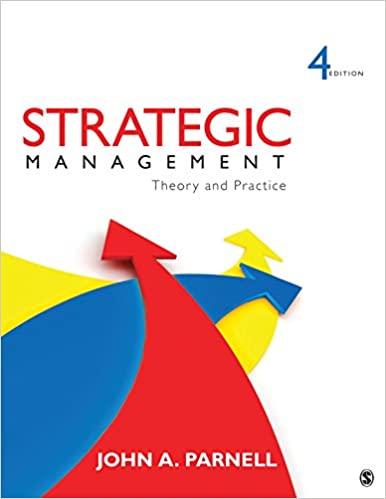Founded in 1948 by Elliot and Ruth Handler, Mattel, Inc., designs, manufactures, and markets a variety of
Question:
Founded in 1948 by Elliot and Ruth Handler, Mattel, Inc., designs, manufactures, and markets a variety of toy products for infants, boys, and girls worldwide. Mattel distributes most of its toys through retailers, with a small percentage sold directly to the public. The company employs more than 25,000 people in 36 countries and sells products in more than 150 countries.
Major brands of the world’s number one toymaker in the world include the famous Barbie dolls, Hot Wheels and Matchbox cars, Magna Doodle, and Fisher-Price, as well as a number of products based on characters from Disney, Sesame Street, Barney, Blue’s Clues, Winnie the Pooh, and even Harry Potter. About one-third of the company’s revenues are derived from Barbie-related products. Major rivals include Hasbro, JAKKS Pacific, and LeapFrog.
Mattel developed a number of core toy lines in the 1950s and 1960s. Barbie was introduced in 1959, joined by companion Ken in 1961. Mattel entered the preschool market with the See ’n Say talking toy in 1965 and launched Hot Wheels in 1968.
In the 1970s, however, the company moved into several nontoy areas, acquiring Western Publishing and the Ringling Brothers and Barnum & Bailey Combined Shows circus. The Mattel Children’s Foundation was established in 1978 and has since been funded exclusively by cash donations from Mattel.
Mattel underwent a major restructuring in the mid-1980s when the company divested itself of all assets not related to toys and cut toy production capacity by about 40%. In the 1990s, the company acquired a number of related businesses, including Aviva Sports, International Games, Fisher Price, Tyco, Kransco, and American Girl (then, the Pleasant Company) in 1998. The company even made an unsuccessful bid for rival Hasbro in 1996. Mattel acquired The Learning Company in 1999 and sold it after mounting losses only a year later. During 2003, the Mattel Children’s Foundation distributed cash grants of almost $6 million, including a grant of $5 million to the Mattel Children’s Hospital at UCLA.
Mattel announced the breakup of Barbie and Ken in 2004 after over 40 years together.
Barbie sales declined in the months shortly thereafter and have suffered as a result of intense competition from rivals, including MGA Entertainment’s Bratz dolls. Mattel announced a reorganization of its core toy business in 2005 and acquired Hong Kong-based electronic toy company Radica Games in 2006 in an effort to expand its appeal to older children and young adults.
Mattel unveiled a new generation of Barbie dolls in 2007.
Today, Wal-Mart, Target, and Toys“R”Us account for almost half of Mattel’s sales. After peaking in 2007, sales declined for 2 years during the recession before increasing modestly in 2010. Non-
U.S. revenues have increased steadily over the years to about 40% of the total in 2010.
Case Challenges
1. Is Mattel too dependent on retail giants such as Wal-Mart, Toys“R”Us, and Target?
2. How important is it for Mattel to develop the “winning toy” each year? How important is the Barbie franchise in this effort?
3. Having secured the number one position in the United States, should Mattel focus its efforts primarily on global markets? Explain.
Step by Step Answer:






